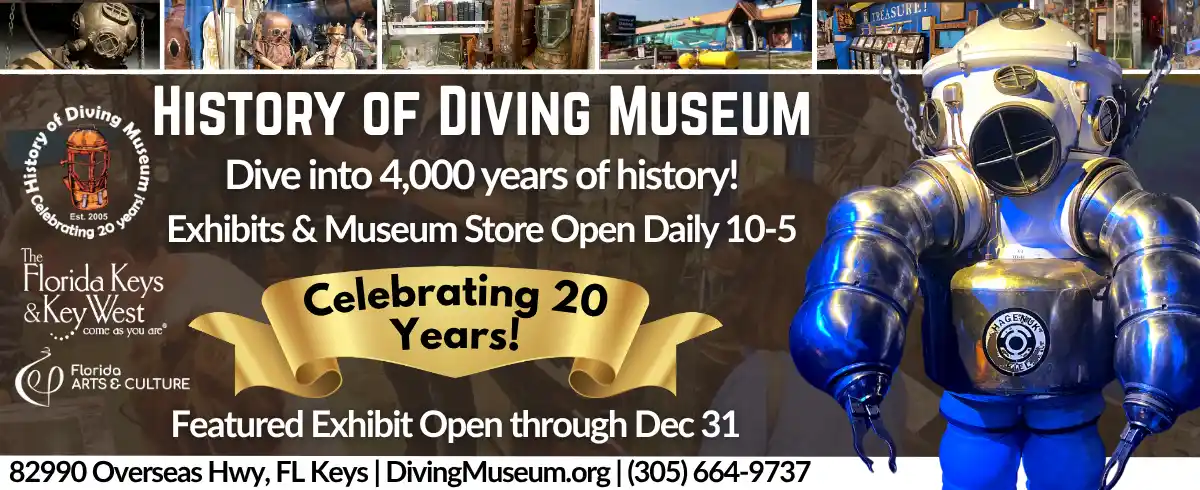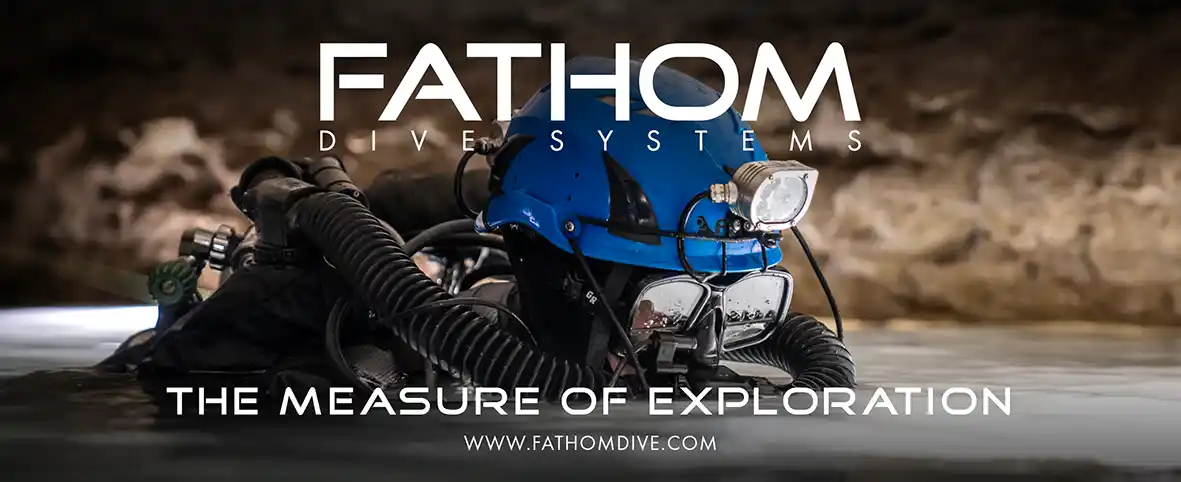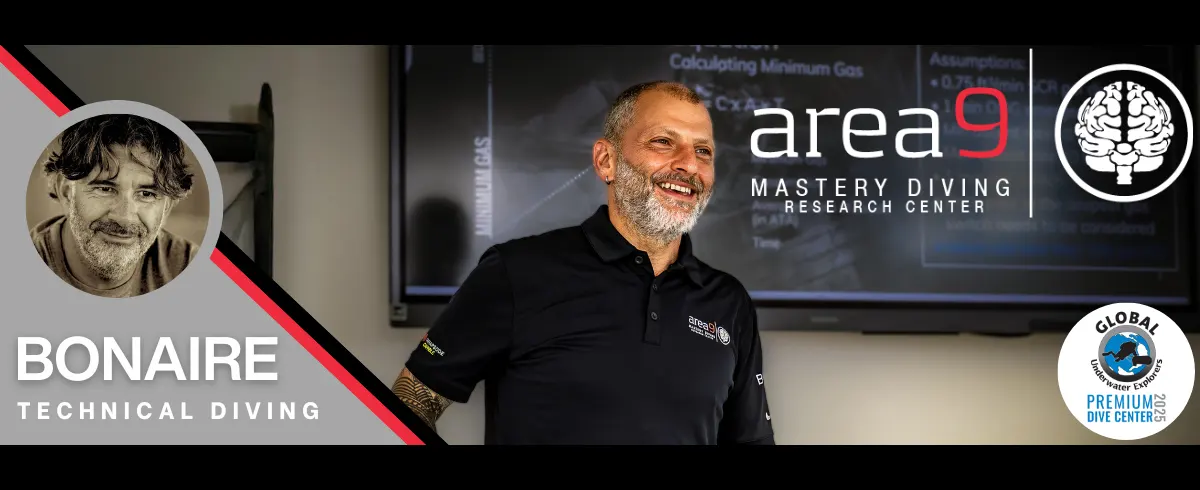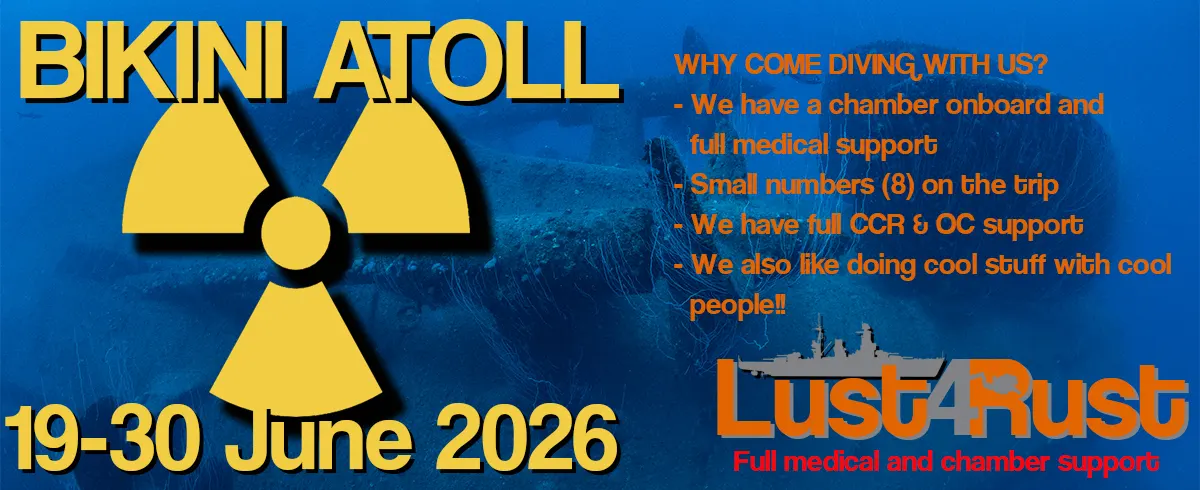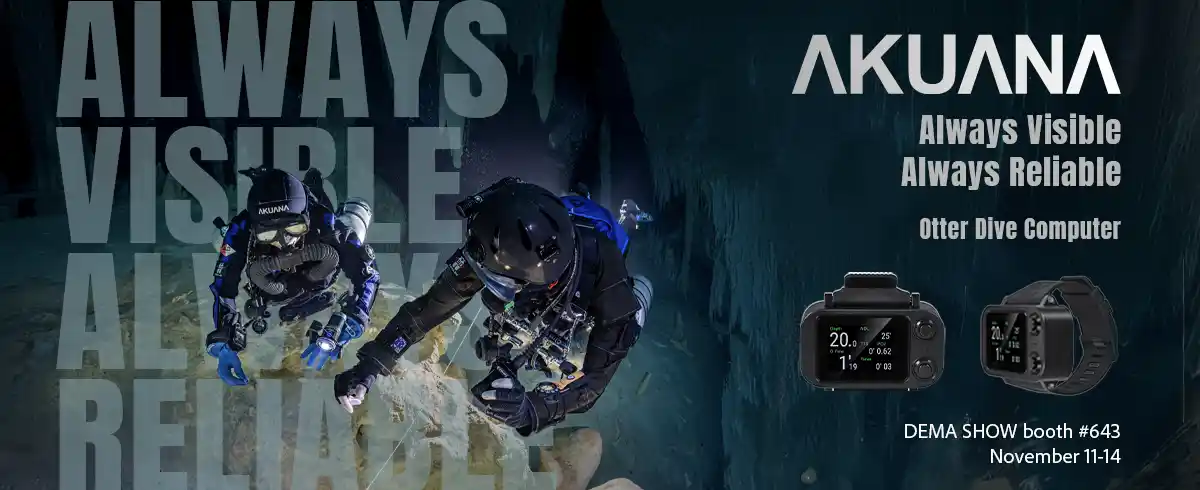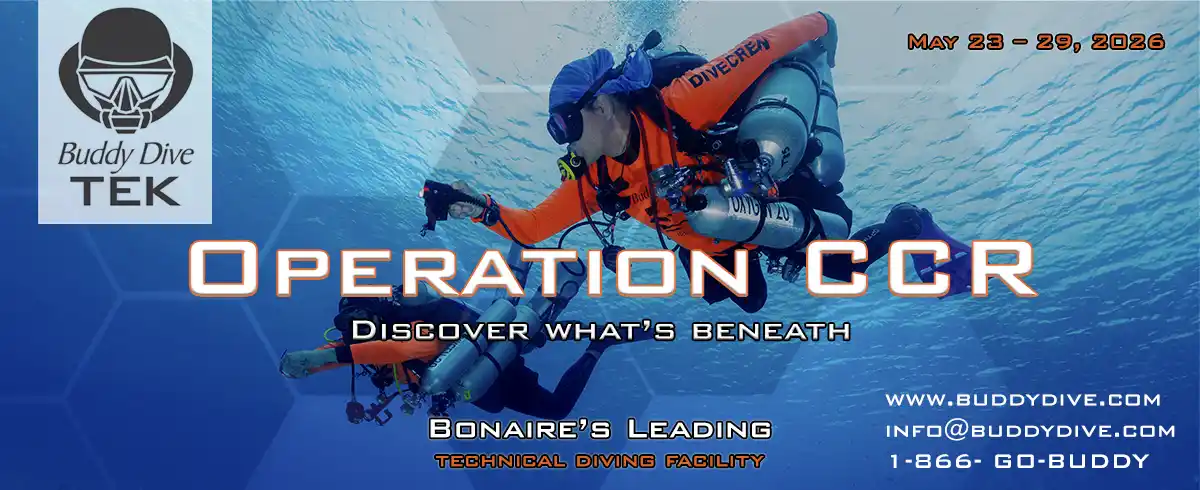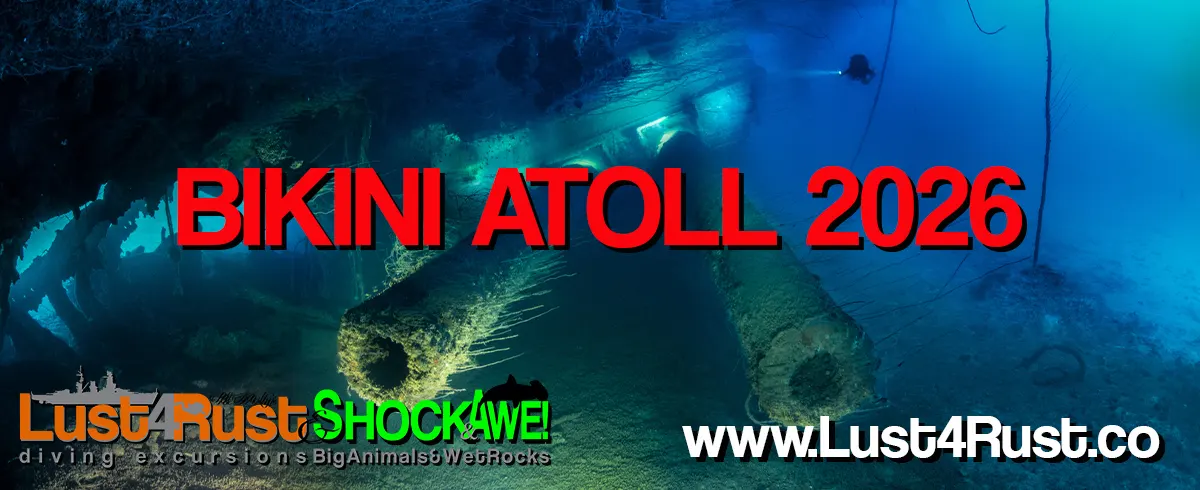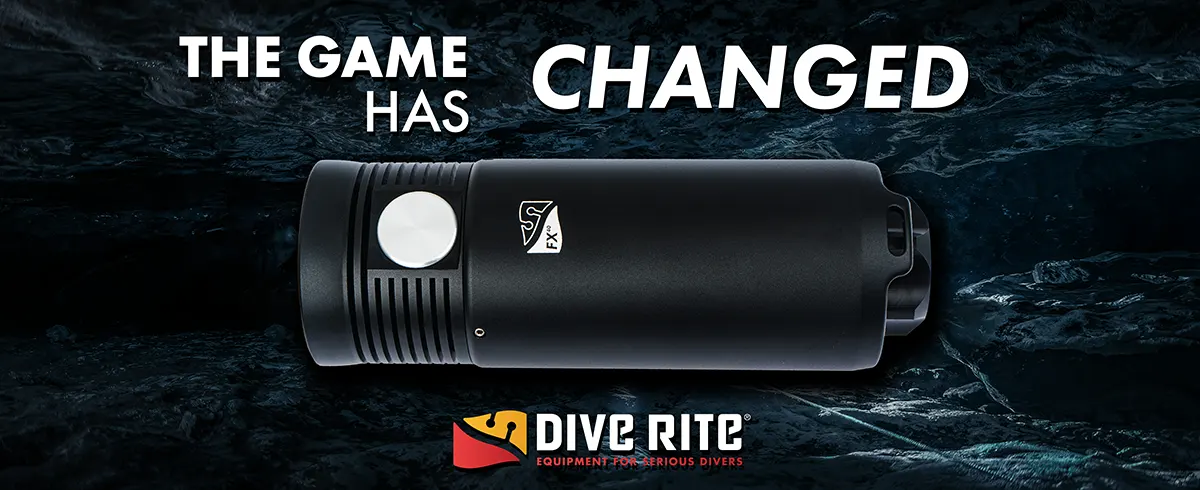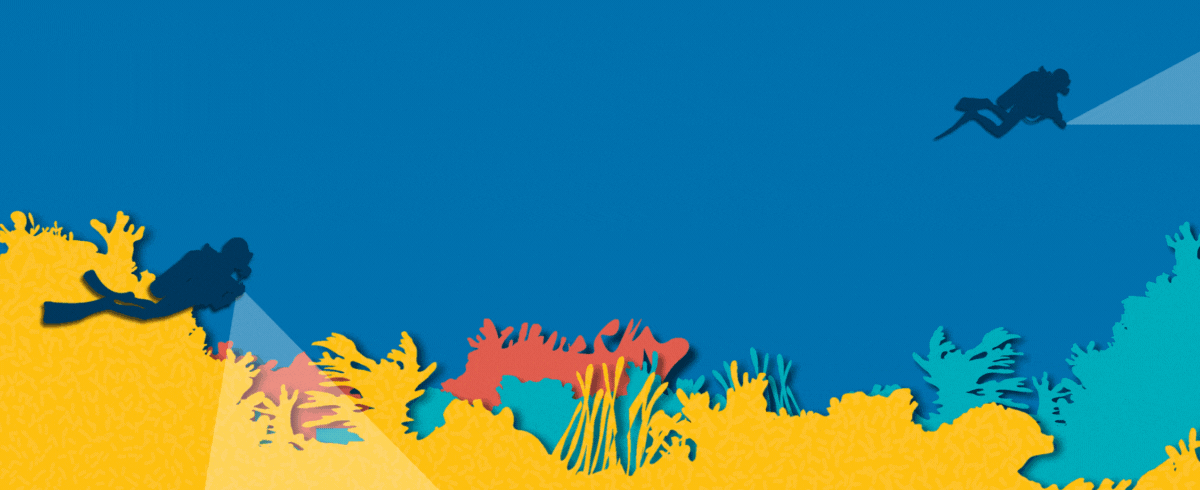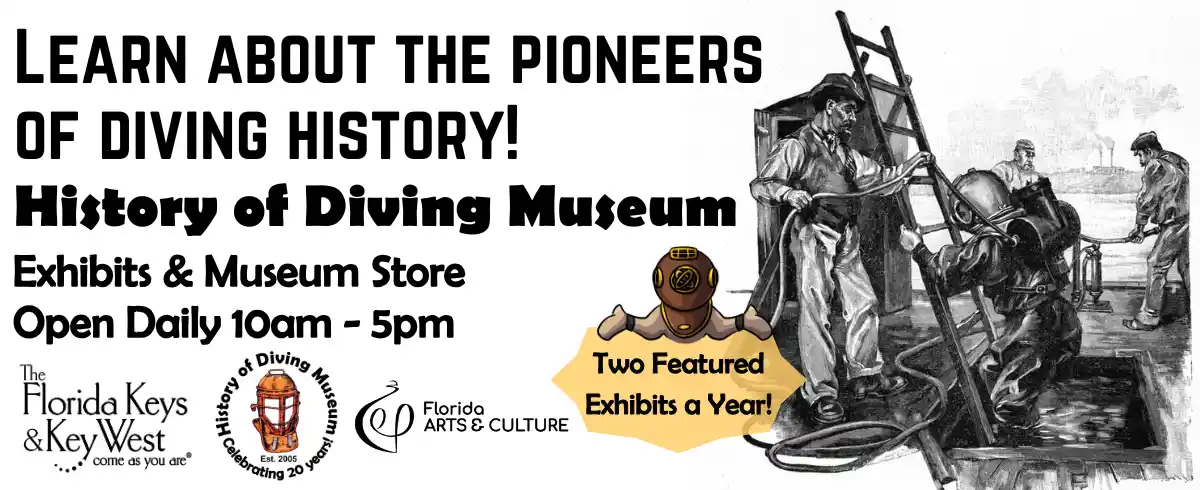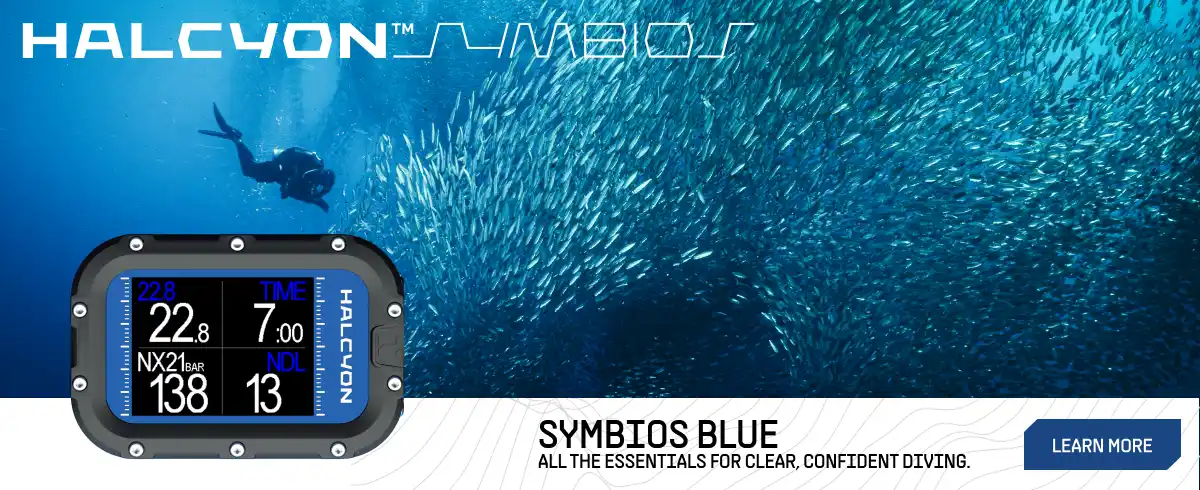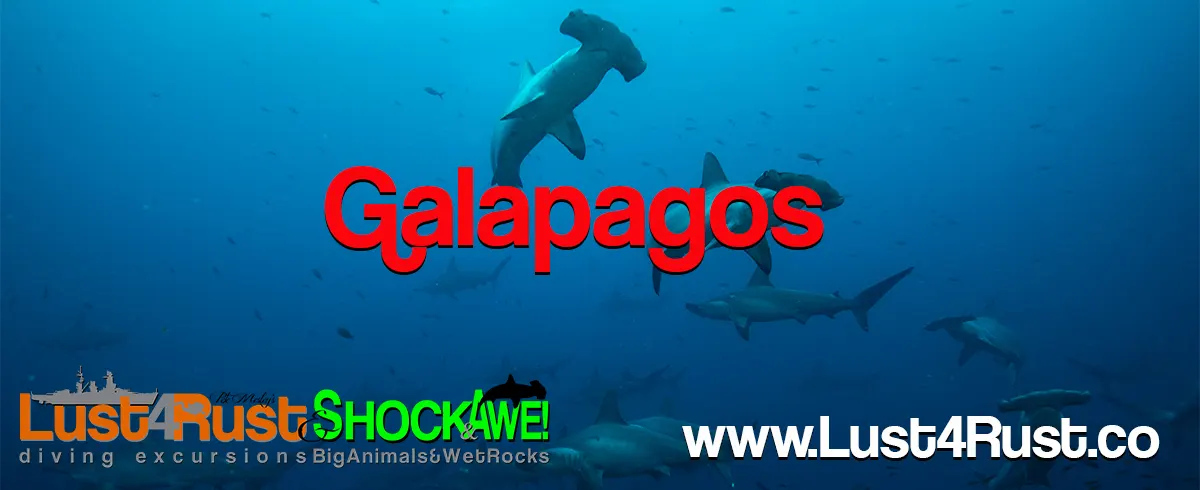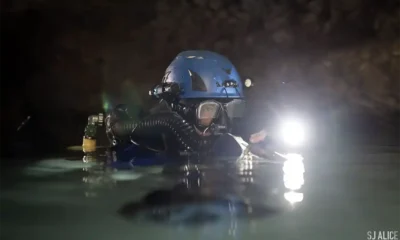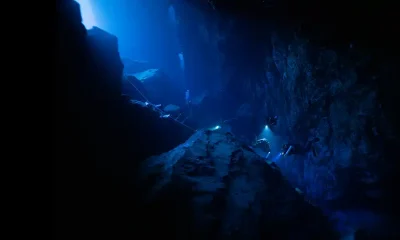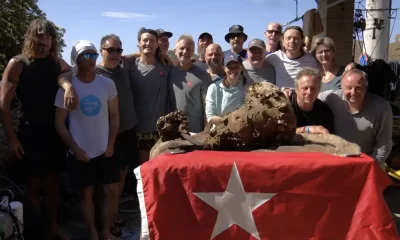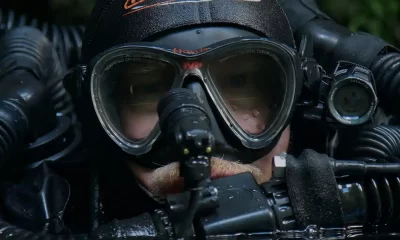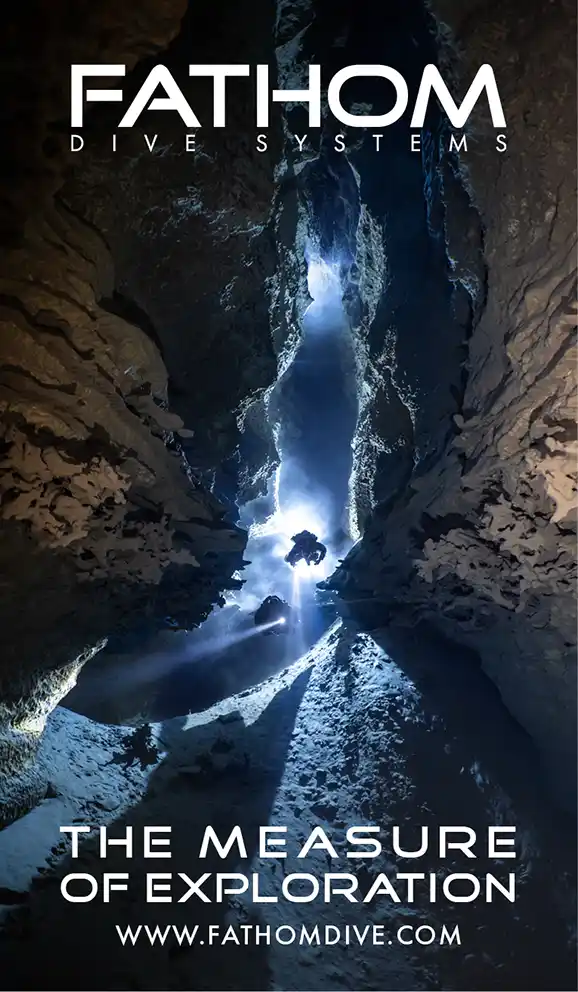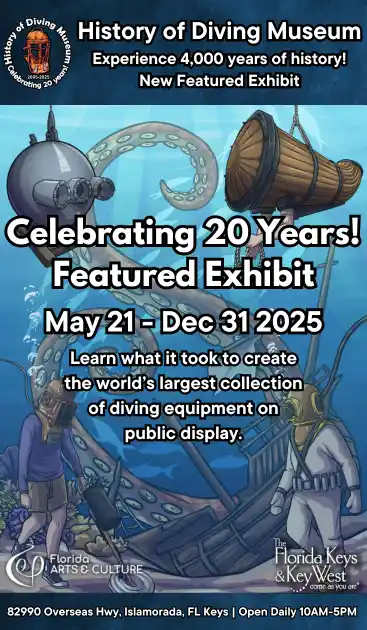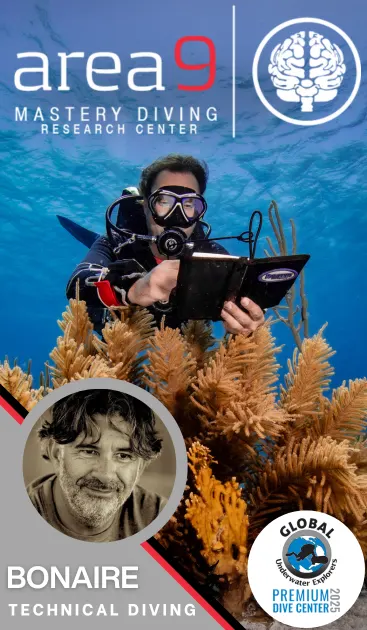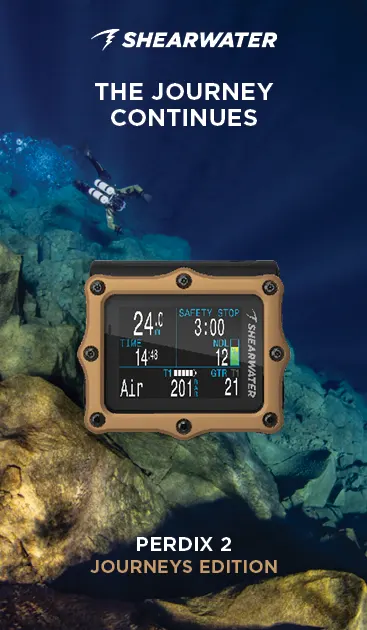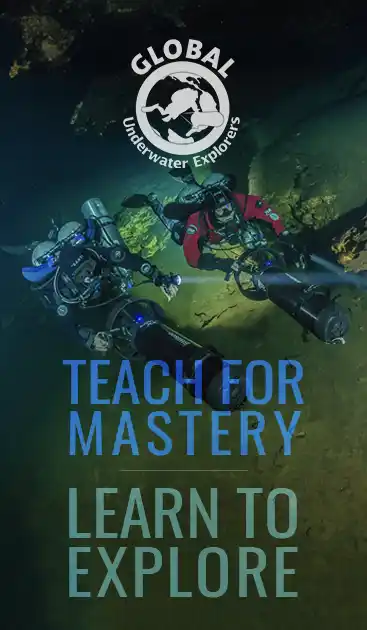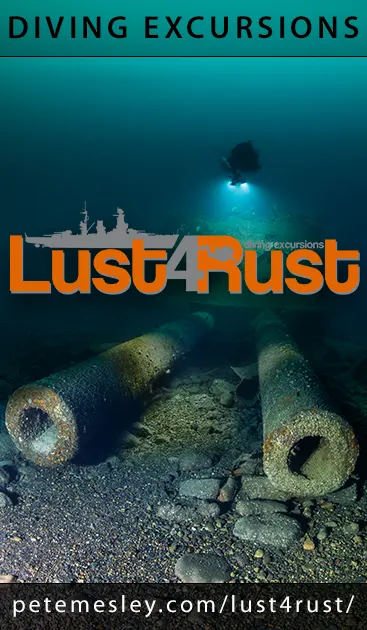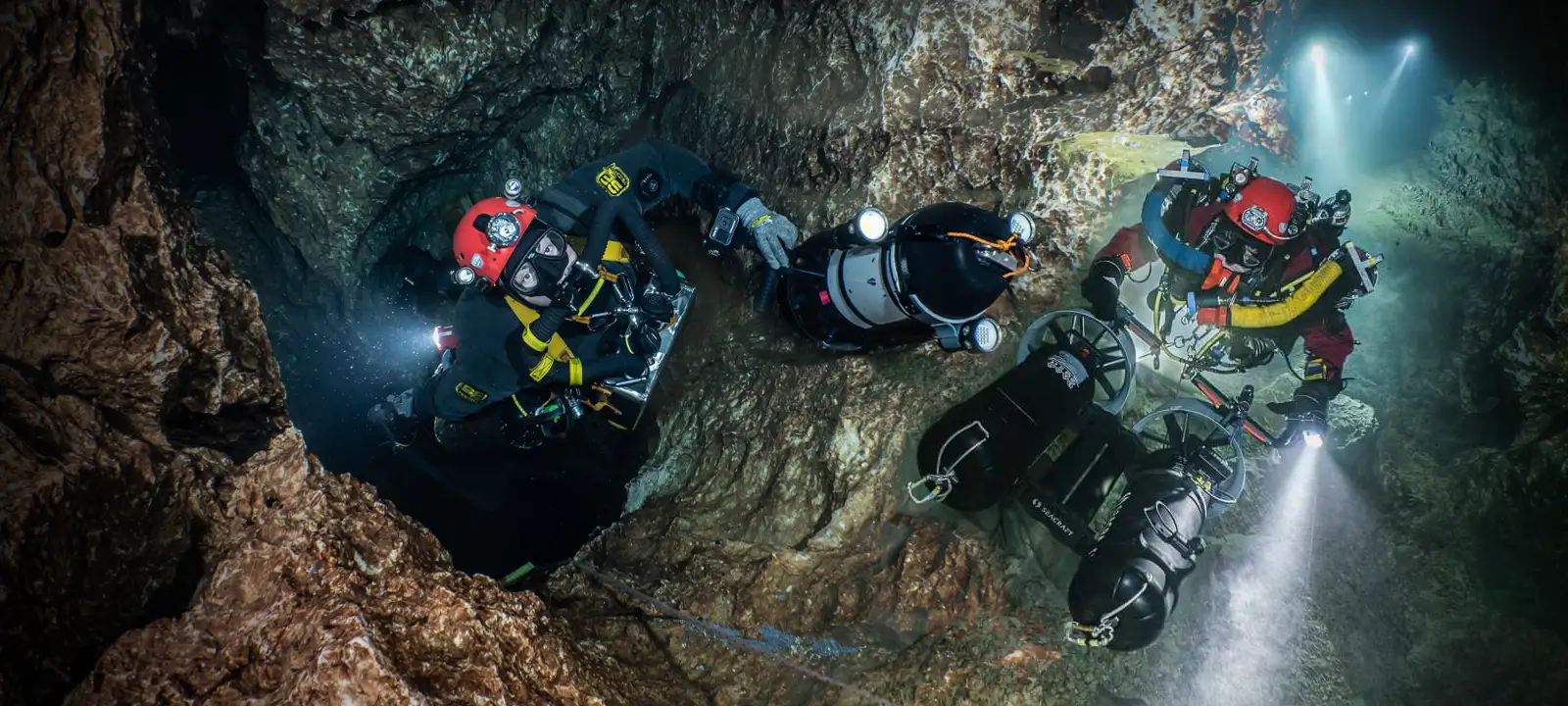
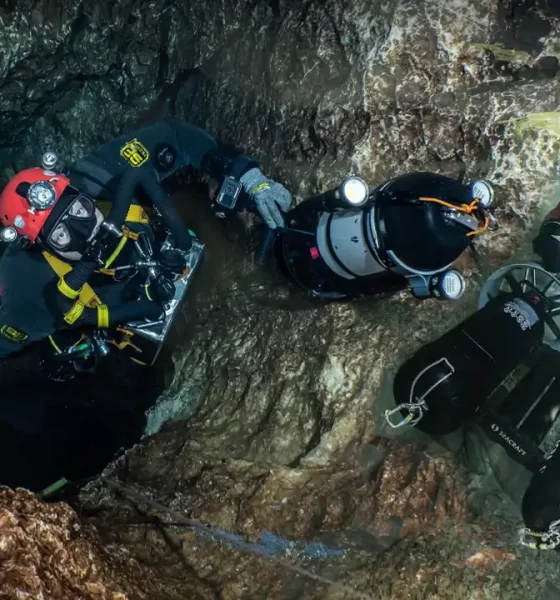
Latest Features
Le Grand Bleu Goes Underground
DAN Europe’s Cristian Pellegrini turns up the pressure on two deep record-holding cave explorers!
Double interview with cave explorers and depth record-holders Frederic Swierczynski and Xavier Méniscus
By Cristian Pellegrini. Images courtesy of F. Swierczynski and X. Méniscus unless noted. Lead image created by SJ Alice Bennett with photos by Laurent Miroult (left) and Alexandre Hache. Interviews conducted in conjunction with the Salon International de la Plongée Sous-Marine, January 2024, Paris.

Ed. note: InDEPTH does not promote or encourage deep compressed gas diving record attempts, or competition between divers. Instead we seek to offer a deeper perspective and understanding of the motivations that compel some divers to push the edge of our underwater envelope.
The history of depth records in diving boasts a rich tapestry of significant events, with freediving often taking the limelight as a fiercely competitive sport. On the flip side, scuba diving tends to be seen as a laid-back, non-competitive activity. However, within scuba, there exist pioneers, milestones, and intrepid explorers who’ve dared to plunge into the abyss—first on air (think Hal Watts and Bret Gilliam), and later with gas mixtures (cue Sheck Exley and Nuno Gomes). Unlike the world of freediving, scuba doesn’t usually feature championships, epic challenges, or frequent relaunches. Records are meticulously planned, sporadically attempted, and occasionally conquered, sometimes with years in between. They’re like isolated flashes against a mostly clear sky. It’s worth noting that discussions about scuba diving records have often been triggered by recounting serious incidents.
So when Frederic Swierczynski recently smashed Xavier Menicus’s record of 286 m/938 ft with a deep cave diving record at 308 m/1011 ft on 9 November 2023, closely followed by Méniscus who then conducted a 312 m/1024 ft dive reclaiming the record on 6 January 2024—in the same system, Font Estramar, France—I found myself leaping out of my chair. For a moment, my mind flashed back to the legendary challenges between Enzo Maiorca and Jacques Mayol which were immortalized in the iconic movie “The Big Blue” (1988), a film that has inspired generations of divers.
Now, who exactly are Frederic and Xavier? What propels them to push beyond the limits? Are they exploring or chasing records in depth? Could it be that we’re witnessing the resurgence of an era filled with remarkable challenges to the depths?
Time to put these two explorers right where they thrive—under pressure!

Cristian: Fred, Xavier—two explorers, two world records for the deepest cave dive in less than two months. What’s next? Does this herald a period of further challenges to attain even greater depths?
Fred: You don’t take such risks just to reach a number. It’s always the cave that decides in the end, it’s a process that has to be natural. Those who go after figures often don’t come back.
Xavier: This was my sixth exploration of Font Estramar, which I started at -192 m/630 ft in 2013. I’ve been diving there for more than 10 years. On 30 December 2019, I reached a depth of -286 m/938 ft, my first world record in cave diving, and I knew it was still going down. Since I started out as a professional diver with COMEX, breaking the -300 m/984 ft barrier has been a dream. In the past four years I’ve had a lot going on in my personal life and it was not until last year that I could resume training.
After Frédéric’s dive, my objective hadn’t changed, it had simply been modified to reach greater depths. And now it’s done! Having attained the goal of a lifetime as a professional diver, adventurer, and explorer, I will keep the promise I made to my loved ones: I am ending the pursuit of the exploration of Font Estramar and the search for depth.
Congratulations on your achievement, Xavier. Not many people get to achieve a lifelong goal. You and Fred are passionate cave divers. What do you both find so compelling about caves?
Fred: I started spearfishing when I was seven years old, then moved on to scuba diving when I was 12. By the time I was 18, I’d lost all excitement and was finding it hard to get motivated. That’s when I discovered cave diving. I trained as an engineer and I found it stimulating to take on new challenges, from a technical point of view, on a different playing field. This fuelled my curiosity and stimulated me to work on equipment and to change standards.
In caves, I feel a deep sense of serenity; I feel safe in a stable environment. There are no currents like at sea, you can’t really get lost easily, and there are no boats on the surface that could pose a threat.
Xavier: I will list a few. First, the beauty of geological formations—through structures and galleries shaped by water. Next, exploring the unknown—the adventure of discovering unique and mysterious places. Then, there are the technical challenges—cave diving is considered one of the most technical forms of diving, requiring state-of-the-art equipment. Next, a sense of isolation and intimacy—it’s a unique experience, made of peace and tranquility. And finally: adapting to extreme conditions— contributing to the knowledge of very deep dives, managing equipment and solving potential problems in order to share our experience and develop the practice.
How important are depth records, and what does deep cave diving records mean to you?
Fred: In my twenties, I wanted to reach 200 metres (656 feet). Over time, it was the desire to explore that took over and drove my goals. It involved a number of factors: going further, where no one else has been, discovering new destinations. This journey also includes discovering oneself better.
What also decides the limit is the feeling of the moment. At a certain point you realise that 400 minutes of runtime will be enough.
Xavier: It’s the personal recognition of a dream and an objective to be reached, with the progress and skills acquired throughout my professional life as a scuba diver, which began in 1987, and my practice as a cave diver since 2000. Scientific research, sharing the discoveries made during our explorations and the knowledge of deep diving. Promotion of the discipline, new techniques, and new equipment that stimulate innovation.


In your opinion, in what percentage have these three elements participated in the success of your records? Experience/ Physiology/Luck.
Fred: I give Luck a 10%. The rest equally split between the other two. Please note my definition of Luck: that very day the natural environment was welcoming, and my mental and physical conditions at the time allowed me to be ready, and to seize that opportunity.
Xavier: Experience and preparation above all. I would also include training. Then physiology, through acquired knowledge of the very high pressure on our body and the gases we breathe. I don’t believe in luck. These dives are the result of many years of practice and knowledge.
You both have exceeded 300 metres. Are we nearing the limits of our current self-contained diving technology?
Fred: Going beyond 300 metres (984 feet) required considerable effort, both personal and organisational. I play rugby, a sport in which the team concept is fundamental. Now, my idea of a team in diving includes both the people who participate in exploration and partnerships. Finding relevant industry partners allows me to approach challenging projects with both the required confidence and the peace of mind. I selected European companies, especially in France and Italy, because there I found a vision and the values that I identify with: creativity, experience, reflection, a way of working, a history that is constantly being renewed.
Xavier: Yes, definitely. The 300-metre mark was reached by just nine [self-contained] divers, including two cave divers, almost always with difficulties and incidents. And there were also five fatal accidents, so more than 50% of cases. We’re guinea pigs, we’re experimenting. Also thanks to our experiences and our data, perhaps the evolution of new techniques will allow humans to reach greater depths, more safely, in the near future.


Yes, possibly the use of hydrogen (See N=1: The Inside Story of the First-Ever Hydrogen CCR Dive) or someday one atmosphere suits. The two of you share much in common, but you have your differences–for example, your approach to the dive as well as your preferred procedures and equipment. What do you think is your strongest point? And what do you envy about your other?
Fred: One of my strong points is fluidity in the water. As a swimming pro, I love gliding through the water, optimising energy through movements that aim to perfection. I am lucky enough to have reached 50 years of age in good shape, able to contribute to some kind of innovation in diving. Xavier? It is not a question of envying him, I think he is a very good diver.
Xavier: My strong points are my experience as a professional diver since 1987. I’m trained to work at these depths; it’s my job. I practise many hours in the water every day, training. It’s about mindset. Then my physiology, with low gas toxicity. My teammates say that I’m an exceptional diver, very experienced, with an out-of-the-ordinary mind, that I master everything and prepare my explorations meticulously. What I envy about Frédéric is that he’s younger than I am.

When asked how he would know when he had gone deep enough, legendary cave explorer Sheck Exley replied, “Fear.” What would you say is your biggest concern or fear on a sub-275 metre cave dive?
Fred: Each time I put my head underwater, I ask myself how I feel. I train on each step to make things smoother and improve transitions. The 0 to -10 metres section is the most dangerous when using CCR, the biggest worry being oxygen partial pressure. The rest of the parameters and the equipment are well established.
Xavier: My comfort zone is around 260-270 m (853-886 ft), depths that I’ve been to several times and that I’ve mastered. When going beyond this comfort zone, yes, you can be scared, but you have to overcome it to control your diving as much as possible—your mind, your technique—to deal with any possible incidents. Using CCR, we have more time to overcome problems. This gives us a considerable advantage over Sheck Exley’s explorations in the 90s.
Do you and your teams exchange information with each other? What is the relationship between you?
Fred: I invest a lot in communication, mine and those who work with me. Until now, the two teams have not really had the opportunity to exchange significant information and experiences.
Xavier: Each explorer works with his own team, with people he has known for a long time. It’s about having absolute confidence in your teammates. Frédéric and I have met at conferences or at a dive site. I have great respect for what he does, the techniques he uses for his dives, and the performances he achieves. Being younger than I am, he will certainly have new opportunities to go further and deeper.

Pascal Bernabé (330 m in open waters in 2004), Theo Mavrostomos (701 m in a high-pressure chamber in 1992), and now you two. What special relationship exists between great depth and French divers?
Fred: Pascal and Theo are friends. With Pascal I went cave diving in search of new horizons. Why so many French ? As I said before, in this part of Europe (France, Italy) there are perhaps some of the best established diving traditions, also to undertake this kind of challenge.
Xavier: France has an important diving culture, having invented almost everything in the industry. Captain Cousteau created the first scuba unit, COMEX invented saturation diving at great depths. In addition, we have a fantastic playground: the sea and oceans bordering our coasts, and numerous submerged caves, some of the longest and deepest in the world.
You have a good point there Xavier. But to both of you, are you afraid that your exploits will generate emulation by less experienced and less physiologically apt divers, potentially leading to accidents?
Fred: I mean to talk about both the records and the incidents. I want to leave a good legacy, to contribute to a better understanding of opportunities and risks involved. This is the time to reflect on this experience and draw lessons from it, namely the need for proper training, or understanding gas density and how it interacts with our physiology.
Xavier: I see it as the normal evolution of the sport. We can draw a parallel with the mountains and the search for the highest peaks. Everest has now become a tourist activity. But you need people who are well-informed about both techniques and risks involved. It’s our duty to share our experience, to make this activity safer.
What would be, in general, your recommendation to those who intend to undertake exploration at significant depths?
Fred: Don’t rush things. Step by step, if your body allows it, everything can be achieved.
Xavier: Practice and experience. Take your time to get through each stage before returning to your comfort zone quickly. Master your techniques and equipment to perfection. Surround yourself with the right people and humbly follow in the footsteps of your fathers. Above all, don’t become complacent, always question yourself.

Who or what is your greatest inspiration, which drives you to explore? What does the word exploration really mean to you?
Fred: Jules Verne and his adventure, Jean-Louis Etienne and the sense of exploration, Théodore Monod (naturalist, humanist), and Francis Le Guen (explorer, author, and photographer). Exploration is the answer to my curiosity, to my thirst of knowing more.
Xavier: Exploring is a state of mind. It’s about going beyond what’s known, understanding and bringing back scientific elements to advance our knowledge. And sharing what we discover. As children, we got up on our feet one day to walk around and explore our environment. Some of us retain this spirit longer than others. I was drawn to cave diving by Olivier Isler’s stories and reports, the techniques he invented in the 90s, which I have used and developed since the early 2000s, and which are now the norm in deep and remote cave diving. These include the use of rebreathers, redundancy in the side rebreather, as well as the use of twin DPVs.
Thank you both and good luck to you!
Here are the accounts of Xavier and Frederic’s record dives:
InDEPTH: Über-deep with Cave Explorer Xavier Meniscus by Michael Menduno
SEACRAFT: WORLD RECORDS: CAVE DIVING DEPTH WORLD RECORD -308M (Frederic Swierczynski)
DIVE DEEPER
InDEPTH: The Risk and Management of Record Chasing by Neal W. Pollock PhD
InDEPTH: Omne Trium Perfectum by Axel Schoeller
InDEPTH: Karen van den Oever Continues to Push the Depth at Bushmansgat: Her New Record—246m by Nuno Gomes
InDEPTH: The First Helium-based Mix Dives Conducted by Pre-Tech Explorers (1967-1988) by Christopher Werner
InDEPTH: Diving Beyond 250 Meters: The Deepest Cave Dives Today Compared to the Nineties
InDEPTH: When Easy Doesn’t Do It: Dual Rebreathers in Extended-Range Cave Diving .

Cristian Pellegrini is a digital marketing and communications specialist at DAN (Divers Alert Network) Europe, and editor of AlertDiver.eu, the international online magazine promoting diver safety. A scuba diving instructor, tech and cave diver, he loves when his inner kid takes command, unleashing his creative spirit, and finds passion playing with words, visual stuff, and marine life. Follow Cristian on IG / underwaterchris


